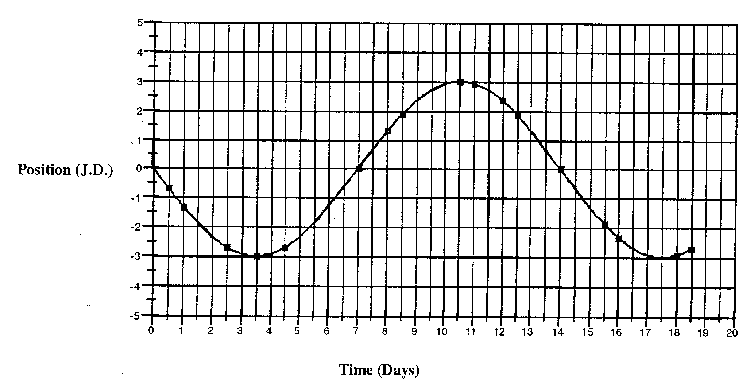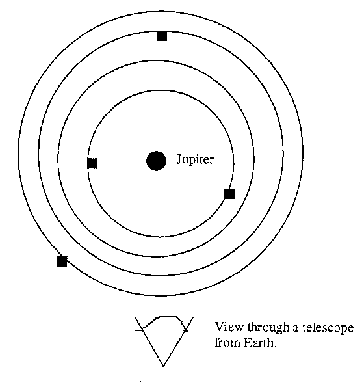Student Content Assessments
Instrument 8: The Revolutions of the Moons
of Jupiter Pre-and Post-Test
Project: Modernizing the Introductory
Astronomy Laboratory
Gettysburg College
Funding Source: NSF: Course and
Curriculum Development (DUE)
Purpose: To test knowledge enhancement
resulting from the CLEA program
Administered To: Undergraduate
students participating in the CLEA courses, as well as students
participating in a control course that did not use CLEA
Topics Covered:
- Content Specific Assessment: earth & space,
inquiry concepts
Format/Length: 12 questions, plus
8 demographic questions. The pre- and post-test each have
4 open-, 2 closed-ended, and 4 demographic questions.
The Revolution of the Moons of Jupiter
Pre-test
| Name |
__________________________ |
|
Date |
__________________________ |
| Graduation Date |
__________________________ |
|
Major |
__________________________ |
- What important property of a planet do we learn by studying
its moon?
- Below is a graph plotting the distance of a moon from
the planet versus time.

- What is the period of the moon?
- What is the radius of its orbit?
- Moon A is 1 J.D. from Jupiter and goes around in 1 day.
Moon B is 4 JD from Jupiter. What is the period of Moon
B?
- 8 days
- 12 days
- 4 days
- cannot be determined
- Below is a top-view diagram of the Jupiter and its moons.
Draw a diagram illustrating how the moons would appear through
a telescope when being viewed from Earth?

Draw your diagram in the space provided.
- Which of the moons of Jupiter moves the fastest?
- Io
- Ganymede
- Callisto
- Europa
The Revolution of the Moons of Jupiter
Post-test
| Name |
__________________________ |
|
Date |
__________________________ |
| Graduation Date |
__________________________ |
|
Major |
__________________________ |
- What important property of a planet do we learn by studying
its moon?
- Below is a graph plotting the distance of a moon from
the planet versus time.

- What is the period of the moon?
- What is the radius of its orbit?
- Moon A is 1 JD from Jupiter and goes around in 1 day.
Moon B is 4 JD from Jupiter. What is the period of Moon
B?
- 8 days
- 12 days
- 4 days
- cannot be determined
- Below is a top-view diagram of the Jupiter and its moons.
Draw a diagram illustrating how the moons would appear through
a telescope when being viewed from Earth?

Draw your diagram in the space provided.
- Which of the moons of Jupiter moves the fastest?
- Io
- Ganymede
- Callisto
- Europa
|




